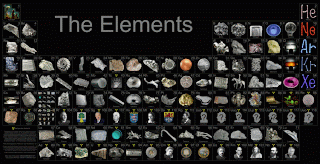Science Class (6A)
sábado, 21 de mayo de 2011
Summary: Organization of Living Things
This ropic is about how the living things are organize. All living things are made up of cells. Cells is the basic unit of life. A group of cells forms tissue, a group of tissues froms organs,
lunes, 2 de mayo de 2011
Temperature, Heat, and Matter
Vocabulary #5
 |
| Thermal expansion: the expansion of matter when its temperature is raised. |
 |
| Pressure: the force on each unit of area of a surface. |
 |
| Freezing: the change of a liquid into a solid. Melting: the change of solid into liquid. |
 |
| Boiling: the formation of bubbles of vapor that escape from a liquid that is being heated. |
Vocabulary #4: Temperature and Heat
Potential energy: energy stored in
an object or material.
 |
| Kinetic energy: the energy of a moving object. |
Potential energy: energy stored in
an object or material.
 |
| Temperature: the avarage kinetic energy of the molecules in a material. |
 |
| Heat: energy that flows between objects that have different temperatures. |
 |
| Radiation: the transfer of energy by electromechanic waves. |
 |
| Conduction: the transfer of energy by direct contact of molecules. |
 |
| Convection: the transfer of energy by the flow of a liquid or gas. |
 |
| Insulation: prevents heat from flowing in or out of a material. |
Chemical Properties
Vocabulary #3
 |
| Compound: a chemical combination of two or more elements. |
 |
| Chemical bond: a link that atoms or electrically charged particle can form with each other. |
 |
| Chemical formula: a way using letters and numbers to show how much of each element is in a sutance. |
 |
| Ion: a electrically charged with unequal numbers of protons and electrons. |
 |
| Molecule: a group of bonded atoms that acts like a single particle. |
 |
Chemical property: a way of decribing how a subtance changes chemically with other subtances. |
 |
| Exothermic: a reaction that gives out heat. |
 |
| Endothermic: a reaction that absorbs heat. |
sábado, 19 de marzo de 2011
Physical Properties
Vocabulary #1
.Mass: amount of matter in a object. Also a measure of ow hard it is to push or pull and object.
Volume: the amount of space an object takes up.
Density: the amount of mass in a certain volume of material.
Physical property: a property thet can be observed without changing the identify of a subtance.
Solution: a mixture of one subtance dissolved in another so that the properties are the same throughout.
Elements and Atoms
Vocabulary #2
 |
| Element: a subtance that cannot be broken down any further into anything simpler. |
 |
| Atomic number: the number of protons in an atom. |
 |
| Metal: any group of elements that conducta heat and electricity, is shiny abd benable. |
Suscribirse a:
Comentarios (Atom)










